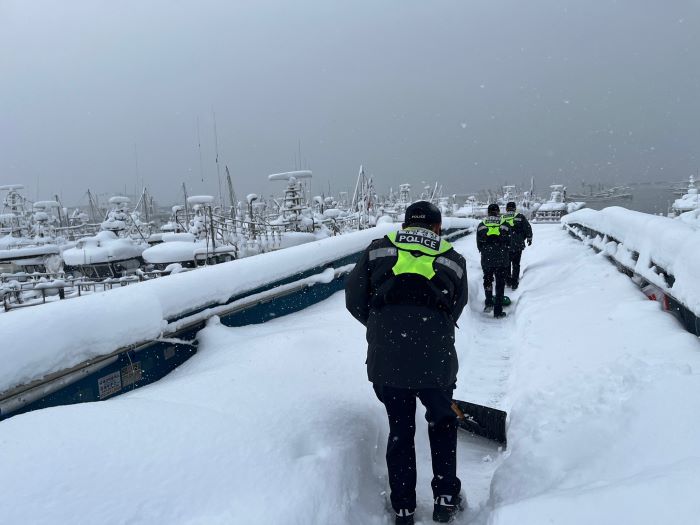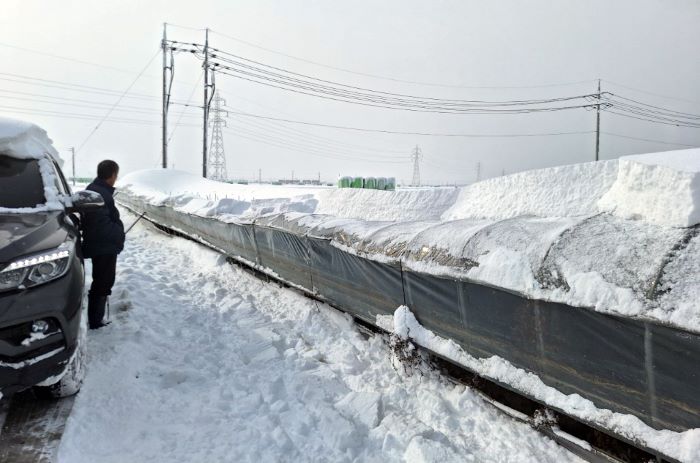
Maritime police officers clear snow at a port in Gunsan, Jeollabuk-do, on Dec. 22 after heavy snowfall. In Jeollabuk-do, heavy snowfall of up to 60 centimeters over three days caused damage to agricultural facilities. (The photo provided by Gunsan Marine Police Station, Jeollabuk-do)
SEOUL, Jan. 5 (Korea Bizwire) – The Korean Meteorological Administration (KMA) announced on January 4 that it is expanding the provision of snow weight information in its weather forecasts.
Since last month, the KMA has been running a pilot project in Gwangju and South Jeolla Province, estimating the weight of expected snowfall and providing this information when the snow is anticipated to be heavier than average.
On December 21, when heavy snow was predicted for the western part of the Jeolla provinces, the western coast of South Chungcheong Province, and Jeju, the KMA included a warning in its forecast about potential structural damage due to the heavy snow.
The warning specifically mentioned concerns about the collapse of livestock sheds, vinyl greenhouses, and other weak structures.
This month, the area for providing snow weight information has been extended to include the eastern coast of Gangwon Province and northern North Gyeongsang Province.
The KMA has decided to issue warnings about potential structural damage due to snow accumulation, even when the snow is average or lighter than average, if it accumulates to a few dozen centimeters. This is because such accumulation can still be heavy enough to cause damage.
Snow weight is a crucial piece of information for preventing damage caused by snow. The KMA explains that when snow is converted to water, its weight becomes more apparent. For instance, snow with a water-to-snow equivalent ratio of 10, where 10 mm of precipitation turns into 10 cm of snow accumulation, can be quite heavy.
If 50 cm of this type of snow accumulates over an area of 100 square meters (approximately 30.25 pyeong), it is equivalent to the same area being filled with 5 cm of water, weighing about 5 tons.
M. H. Lee (mhlee@koreabizwire.com)







